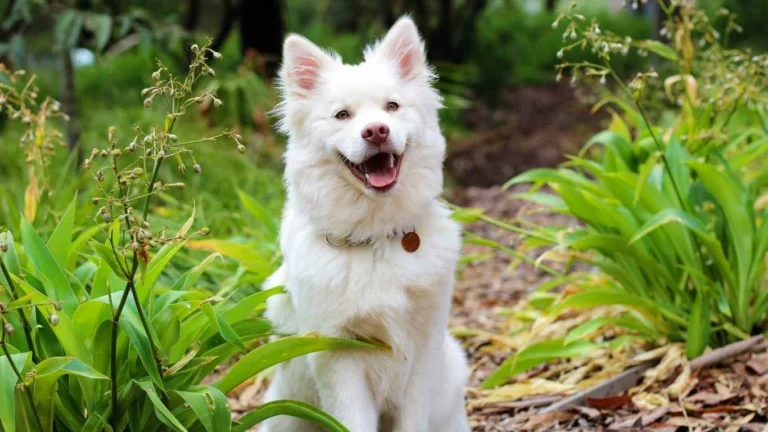Can Dogs Eat Dragon Fruit Safely? Discover the Sweet Truth!
Ever had your dog give you the “puppy eyes” while you’re enjoying a snack and wondered, can dogs eat dragon fruit? I sure have—more times than I can count! As someone who’s worked closely with pups every single day in a shelter and pet clinic, I’ve seen how curious dogs can be about human food. They’ll sniff out the weirdest things, and honestly, sometimes dragon fruit ends up on that list. It’s vibrant, squishy, and smells a bit like a cross between a kiwi and a pear—what’s not to love, right? But just because it looks and tastes like a tropical treat to us doesn’t mean it’s automatically safe for our four-legged companions. Let’s break it all down, from real-life experience to actual science.
Is Dragon Fruit Safe for Dogs to Eat?

So, here’s the quick answer for those in a rush: Yes, dogs can eat dragon fruit—in moderation. It’s non-toxic to dogs and can even offer some health benefits. But, like anything new in your dog’s diet, it needs to be introduced carefully.
I remember this one Labrador, Milo, who came into our shelter after being surrendered. Sweetest boy ever—and a total foodie. One day, a volunteer accidentally dropped a chunk of dragon fruit while prepping enrichment snacks, and guess who gobbled it up? Yep, Milo. We panicked at first, unsure whether we needed to call the vet. But after a little digging (and some real-time consulting with our on-site vet), we learned it was safe. In fact, his tummy handled it like a champ!
What’s Actually Inside Dragon Fruit?
Dragon fruit, also known as pitaya, is loaded with vitamins and antioxidants that can be beneficial to both humans and dogs. Here’s a quick snapshot of what’s inside:
- Vitamin C – Great for immune system support
- Fiber – Helps with digestion (as long as you don’t overdo it)
- Calcium and Iron – Supports bone health and red blood cell production
- Low in calories – Perfect for pups that need to watch their weight
- Omega-3s (from seeds) – Great for skin and coat health
Just keep in mind, dogs don’t process sugar the same way we do. Dragon fruit is naturally sweet, so feeding large amounts regularly isn’t ideal. Treat it like a “sometimes snack” and not a diet staple.
How Much Dragon Fruit Is Okay for Dogs?

Even good things can become bad in excess—and that’s true for fruit too. When I was at the clinic, we had a husky mix brought in for an upset stomach, and the owner was at a loss. After a bit of questioning, they admitted to giving her about half a dragon fruit the night before. Not dangerous, but way too much for a medium-sized dog!
Safe Serving Suggestions
Here’s what I usually recommend based on dog size:
- Small Dogs (under 20 lbs): 1-2 small cubes (think blueberry-sized pieces)
- Medium Dogs (20-50 lbs): 3-4 small cubes
- Large Dogs (50+ lbs): Up to 5-6 small cubes
Always remove the tough outer skin—it’s not digestible and could be a choking hazard. The flesh inside is soft, seed-speckled, and perfect when cut into bite-sized portions.
Signs Your Dog Might Not Tolerate Dragon Fruit

Like people, dogs can have sensitive stomachs or food sensitivities. Just because dragon fruit is *generally safe* doesn’t mean every dog’s tummy will give it a standing ovation. Here are a few signs that your dog might not be a fan:
- Loose stool or diarrhea
- Excessive gas (the not-so-fun kind!)
- Itching or redness around the mouth
- Lethargy or change in behavior post-snack
If any of these show up after introducing dragon fruit, it’s best to pause and consult with your vet. Trust me, as someone who’s cleaned up one too many unexpected messes at the clinic—it’s not worth pushing it if your pup doesn’t react well.
Pro Tip From the Shelter Floor
One of the things we started doing at the shelter was using dragon fruit as part of a “fruit salad day” for enrichment treats. Mixed in tiny portions with safe fruits like blueberries and apples (no seeds, of course), dragon fruit added a splash of color and fun. The dogs LOVED the variety, and it made treat time a lot more engaging without overloading them on sugar.
What’s the Best Way to Serve Dragon Fruit to Dogs?

Alright, so now that we know dogs can eat dragon fruit and it can actually be a healthy treat in moderation, the next big question is—how do you serve it? I’ve experimented with a few different ways while prepping snacks at the shelter and trust me, presentation matters, even to pups!
First off, always remove the skin. That spiky pink rind isn’t edible—not even for humans, let alone dogs. Inside, the flesh is super soft and almost jelly-like, which makes it easy to mash, freeze, or chop into tiny cubes. Here are a few dog-approved serving ideas:
- Frozen fruit cubes: Perfect for summer days. Just cube the flesh and pop it in the freezer overnight. Instant pup-sicles!
- Mash and mix: Stir a small spoonful of mashed dragon fruit into their kibble for a colorful twist.
- DIY enrichment treat: Smear dragon fruit puree onto a lick mat. Keeps them busy and happy for ages.
- Fruit blend: Combine tiny pieces of dog-safe fruits like banana, apple (no seeds!), and dragon fruit for a fun treat bowl.
At the clinic, we often used lick mats and slow feeders with these kinds of treats to reduce anxiety during check-ups. Dogs were calmer, more engaged, and way less squirmy. Win-win!
Can Puppies Eat Dragon Fruit Too?

This is a question I get a lot from new pet parents: “Is it safe for puppies?” And hey, I get it. When I was fostering a litter of Shepherd mixes, I was super cautious about every little thing they ate. Puppies have sensitive digestive systems, so even though dragon fruit is technically safe, there are a few more things to consider.
Things to Keep in Mind for Puppies
- Small servings only: Start with just a lick or a pea-sized portion.
- Watch for signs of digestive upset: Even a little fruit can be too much for a puppy’s tummy.
- No added sugars or flavors: Always serve plain, fresh dragon fruit only—nothing canned or processed.
- Age matters: It’s best to wait until your pup is around 8-10 weeks and fully weaned before introducing fruits.
And of course, always check with your vet if you’re unsure. I can’t tell you how many times a quick phone call saved someone a trip to the emergency vet clinic. Better safe than sorry.
Common Mistakes to Avoid When Feeding Dogs Dragon Fruit

Look, I’ve made a few fruit faux pas in my time too, and so have plenty of dog parents. Feeding fruit might sound simple, but there are a couple of common mistakes that are easy to make if you’re not careful. Here’s what I’ve learned through real experience—both successes and “oops” moments:
1. Giving Too Much at Once
Even though dragon fruit is safe, it’s still high in natural sugars. Too much at once can lead to diarrhea, especially in smaller dogs. Think of it as a treat, not a meal replacement.
2. Not Removing the Skin
I’ve seen a dog try to chew the outer skin like it was a chew toy. Bad idea. The tough, waxy skin is not digestible and could cause choking or blockages if swallowed. Always peel it first.
3. Mixing with Unsafe Fruits
Dragon fruit is great—but don’t mix it with grapes, raisins, or citrus fruits when sharing a treat bowl. Those are toxic to dogs and can cause serious health issues. Stick to dog-safe fruits like blueberries, apples, watermelon (no seeds), and bananas.
4. Ignoring Allergic Reactions
Even rare, some dogs might react to new foods. I once had a Spaniel who got hives from mango, and though it’s considered safe, it clearly didn’t agree with him. Dragon fruit allergies are uncommon, but not impossible. Always monitor closely the first few times.
When Should You Avoid Feeding Dragon Fruit to Your Dog?
There are a few cases when even a safe treat like dragon fruit should be off the table. If your pup has diabetes or is on a special vet-prescribed diet, the extra sugar and fiber could interfere with their health plan. Dogs with gastrointestinal sensitivities might also struggle with even small servings.
When I worked with dogs recovering from surgery or dealing with pancreatitis, we stuck strictly to their formulated diet. Even healthy snacks could delay healing or trigger flare-ups. So always keep your dog’s current health condition in mind before introducing any new foods.
If in doubt? Quick vet check. I always remind pet parents: your vet knows your dog’s medical history better than any blog or forum ever will (even mine, and I live and breathe this stuff every day!).
Creative Ways to Include Dragon Fruit in Your Dog’s Diet

By now, we’ve pretty much covered the ins and outs of answering that all-important question: can dogs eat dragon fruit? (Spoiler: yes, with a few caveats). But if you’re like a lot of the pet parents I’ve worked with, you might be wondering how to actually make this into a fun, enriching part of your dog’s routine—without going overboard.
Here are a few tried-and-true ideas I’ve used both at the shelter and with clients at the clinic who wanted to spice up their dog’s day with something healthy but exciting:
- Frozen dragon fruit yogurt bites: Mix plain, unsweetened Greek yogurt with mashed dragon fruit and spoon into silicone molds. Freeze and serve as a cooling summer snack.
- Dog-safe fruit smoothie: Blend a tiny portion of dragon fruit with a few blueberries and a splash of water. Pour over kibble or freeze in ice trays for later.
- Fruit kebabs: Use dog-safe skewers (or just arrange neatly) with small chunks of dragon fruit, apple, and banana. Great for birthdays or pup playdates!
- Stuffed Kong filler: Mash dragon fruit with a bit of peanut butter (no xylitol!) and spoon it into a Kong. Freeze for an extra challenge.
Trust me, enrichment like this is not just for fun—it helps keep dogs mentally stimulated and emotionally balanced. I’ve seen anxious dogs become noticeably calmer just by adding simple food puzzles and treats like these into their daily routine.
Frequently Asked Questions About Dogs and Dragon Fruit

Is dragon fruit skin toxic to dogs?
It’s not classified as toxic, but it is definitely not digestible. That tough, rubbery rind can cause blockages or choking, especially in smaller breeds. Always peel it completely before serving.
Can dogs eat dragon fruit seeds?
Yes, the tiny black seeds inside the flesh are safe. Unlike apple or cherry pits (which are dangerous), dragon fruit seeds are more like kiwi seeds—soft and safe in moderation.
Is red dragon fruit better than white for dogs?
Both types are okay for dogs. Red tends to be a bit sweeter and may cause brighter-colored stool (don’t freak out if you see a little pink the next day—it’s not blood, it’s fruit!). Nutritionally, there’s not a huge difference between the two.
What if my dog doesn’t like it?
Totally fine! Not all dogs go for fruity flavors. One of our senior dogs at the shelter turned his nose up every time we offered dragon fruit, but went bananas over actual bananas. Just like people, dogs have preferences. Don’t force it.
Expert Backing: What the Pros Say
As someone who’s spent a lot of time in pet clinics and shelters, I always stress the importance of checking info with trustworthy sources. Dragon fruit isn’t a super common treat, so it helps to hear what veterinary professionals and pet nutritionists say too.
According to resources from the ASPCA and the American Veterinary Medical Association, dragon fruit is not listed among common toxic foods. While it’s not a necessity in your dog’s diet, it’s a safe option for variety and enrichment if given in small amounts.
The American Gastroenterological Association even notes that fiber-rich fruits like dragon fruit can support healthy digestion in humans—and while dogs aren’t the same, that benefit still carries over in small doses.
Wrapping It All Up: So, Can Dogs Eat Dragon Fruit?
At the end of the day, I always tell dog parents this: yes, dogs can eat dragon fruit—but like with anything new, moderation and observation are key. Whether you’re working with a playful puppy or a senior sweetie, it’s all about balance and making food fun and functional.
Through my own hands-on work in shelters and clinics, I’ve seen firsthand how dogs benefit from a little variety and enrichment in their diet. Just be mindful, read your dog’s signals, and when in doubt? Give your vet a ring.
References
- American Society for the Prevention of Cruelty to Animals (ASPCA)
- American Veterinary Medical Association (AVMA)
- American Gastroenterological Association (AGA)
Disclaimer
This article is based on personal experience and general pet care knowledge gained through work in shelters and clinics. It is not intended to replace professional veterinary advice. Always consult with your veterinarian before introducing new foods to your dog’s diet, especially if they have pre-existing health conditions.




